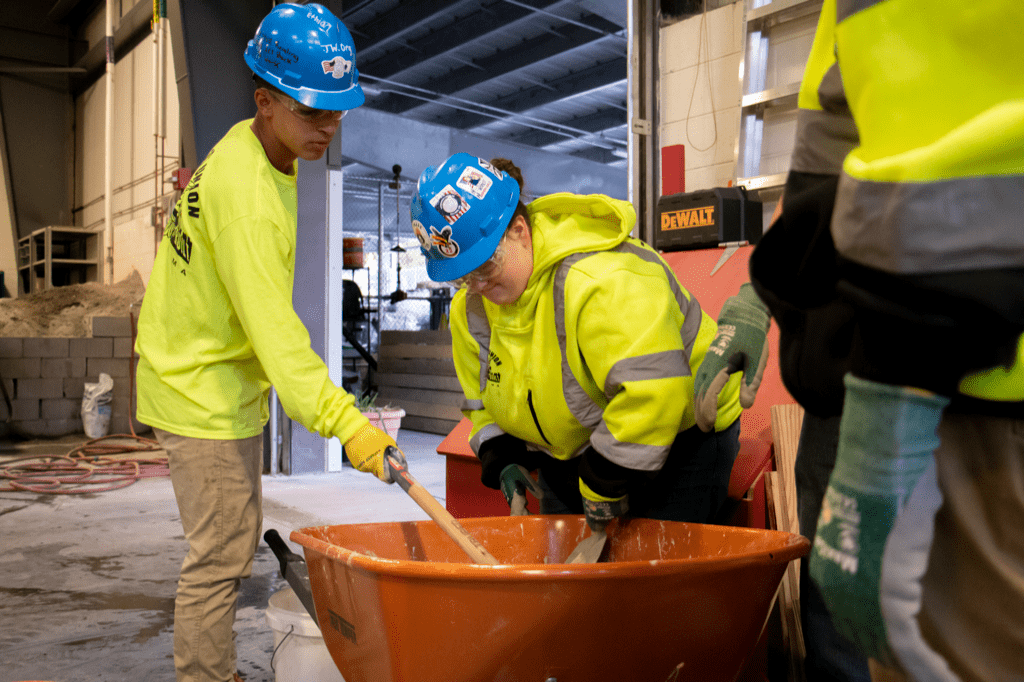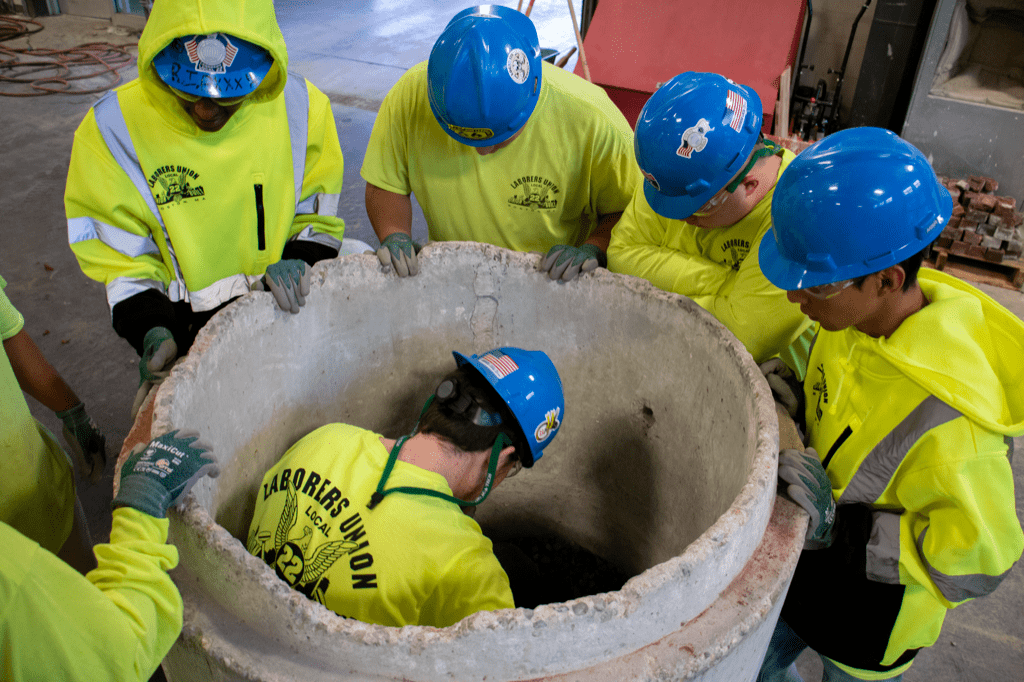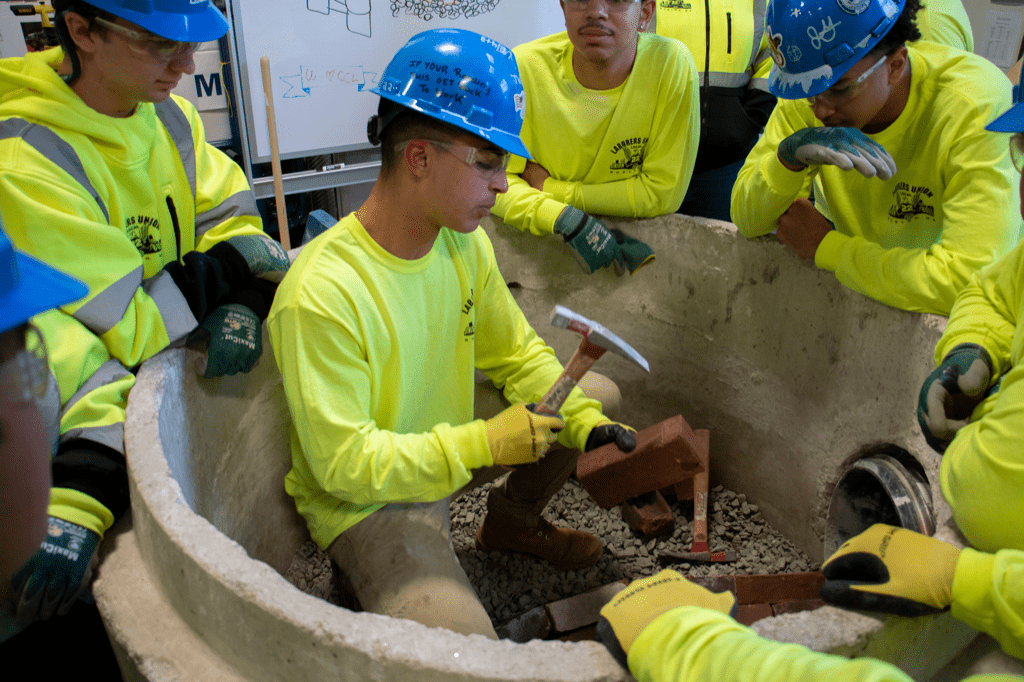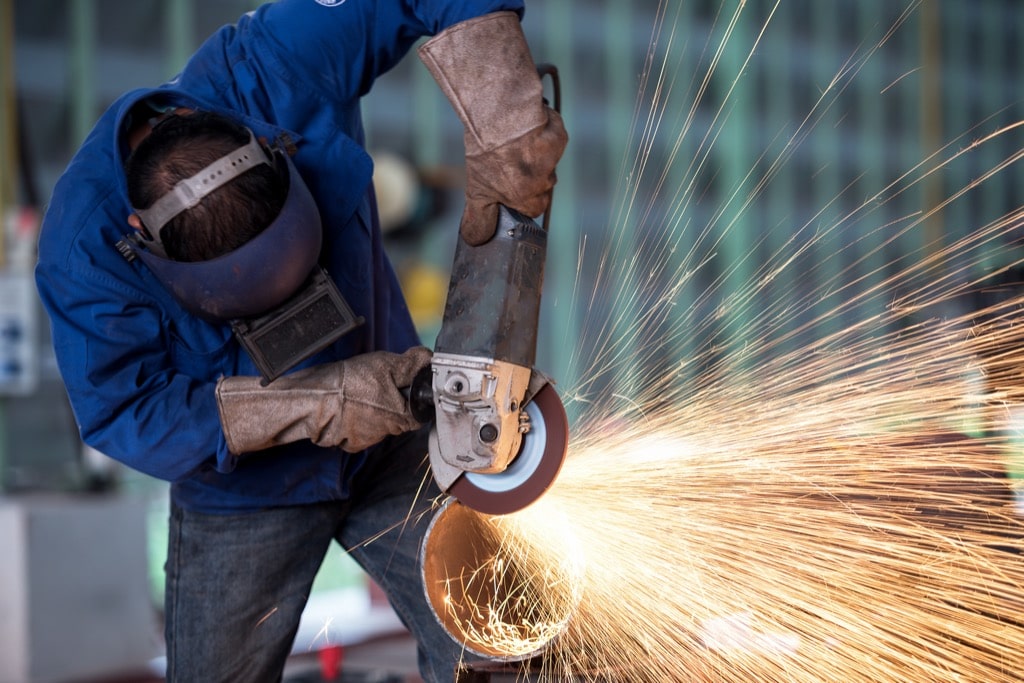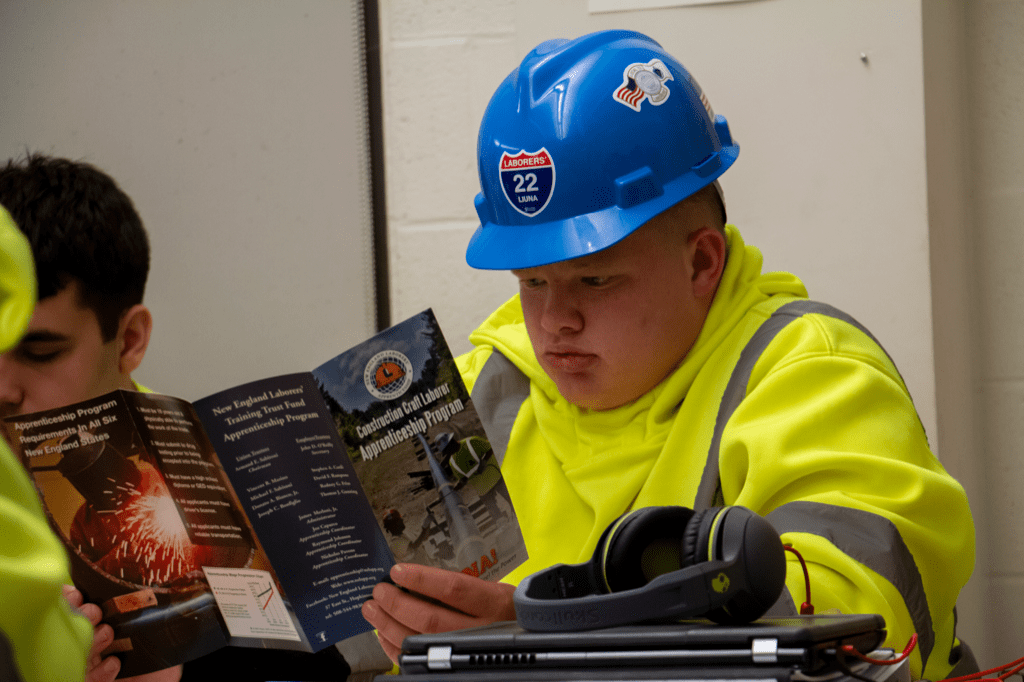
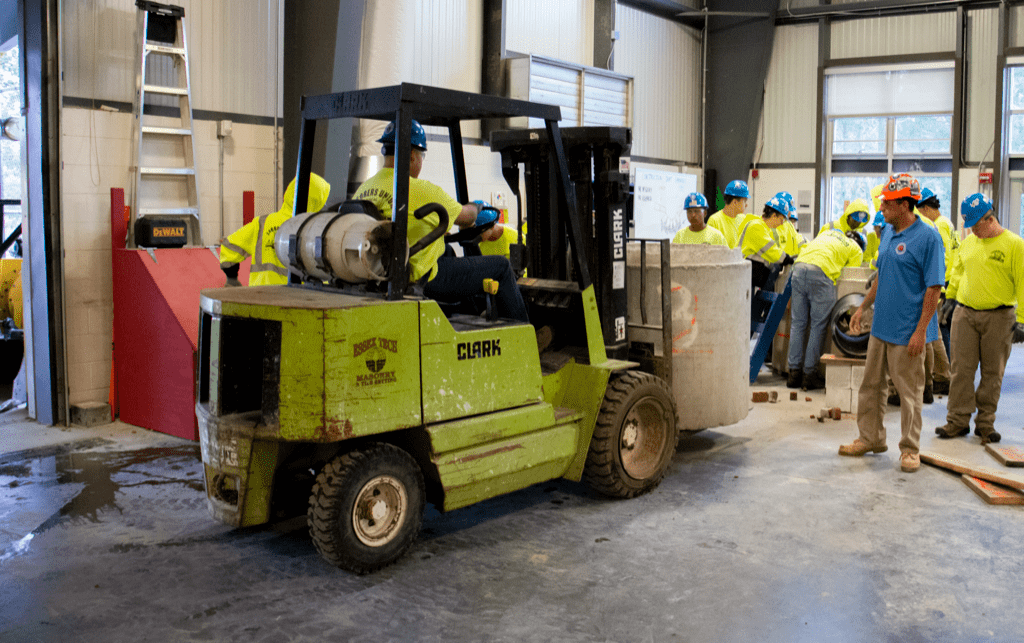
Grade Nine
Introduction to Tools
Grade 9 exploratory segment introduces students to the Laborers Trade through a variety of hands-on projects. Students choosing LIUNA Training spend the rest of the year learning the core CCL Trade including skills and knowledge; materials, tools and equipment; and safety practices. Grade 9 creates the foundation for each following year as Trade topics increase in scale and complexity.
The primary purpose of the Exploratory Year is to excite students through “hands-on” projects to choose Construction Craft Laborer (CCL) as their High School CTE track. These projects will allow students to build and create as a Construction Craft Laborer, generating enthusiasm and introducing these potential CCL CTE students to the work and career opportunities.
The Tools Identification unit addresses the fundamental skills and job responsibilities of a construction craft laborer working with common hand, power, and gasoline-powered tools.
The Basic Safety and Standard PPE unit addresses the fundamental safety knowledge of noise and hearing safety, fall protection, heat stress and prevention, and back injury safety. This unit also provides the opportunities to practice donning and doffing standard Personal Protective Equipment.
The Materials Identification unit addresses the fundamental knowledge and skills to identify, use, and store lumber, nails, and reinforced steels.

